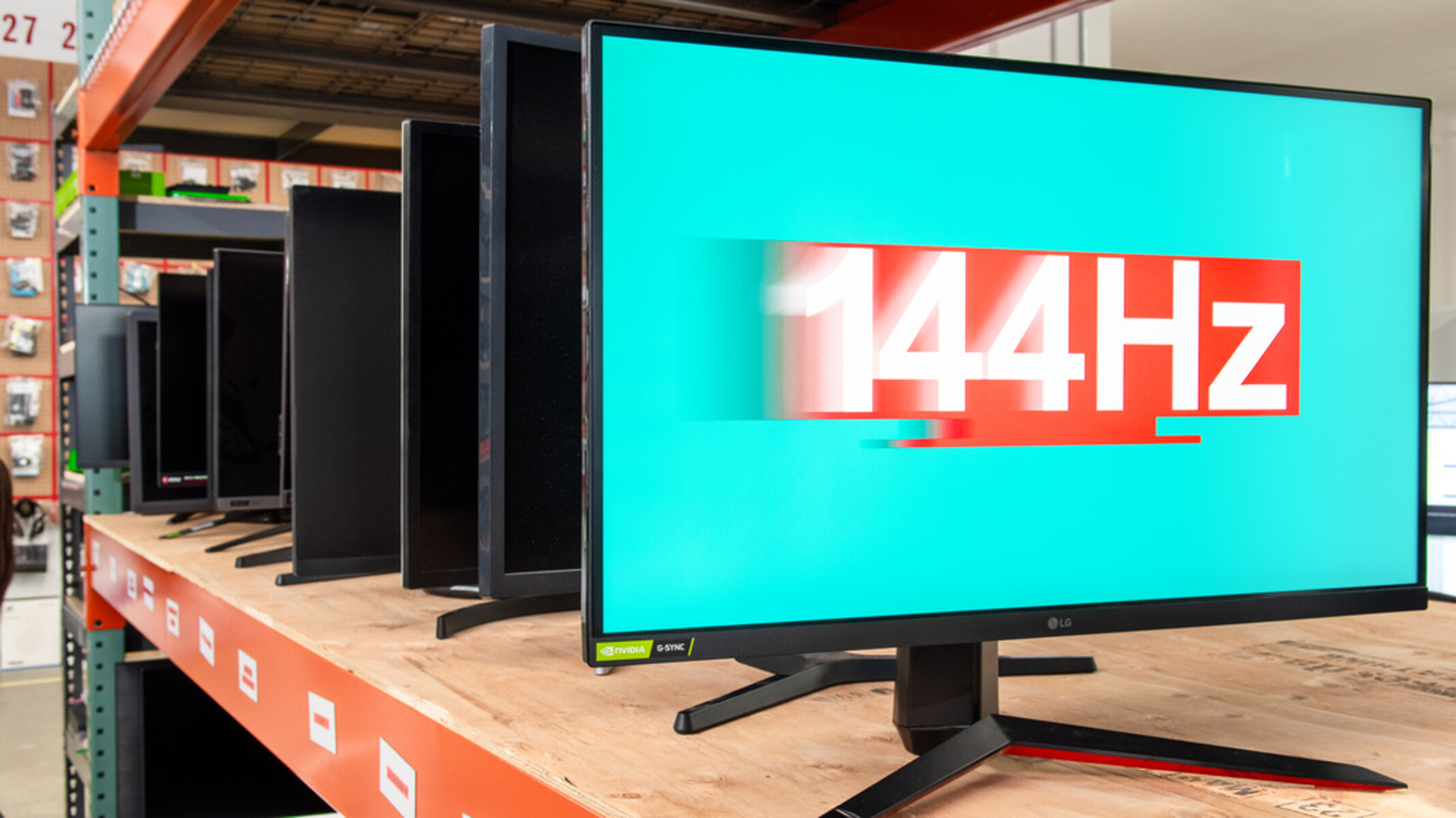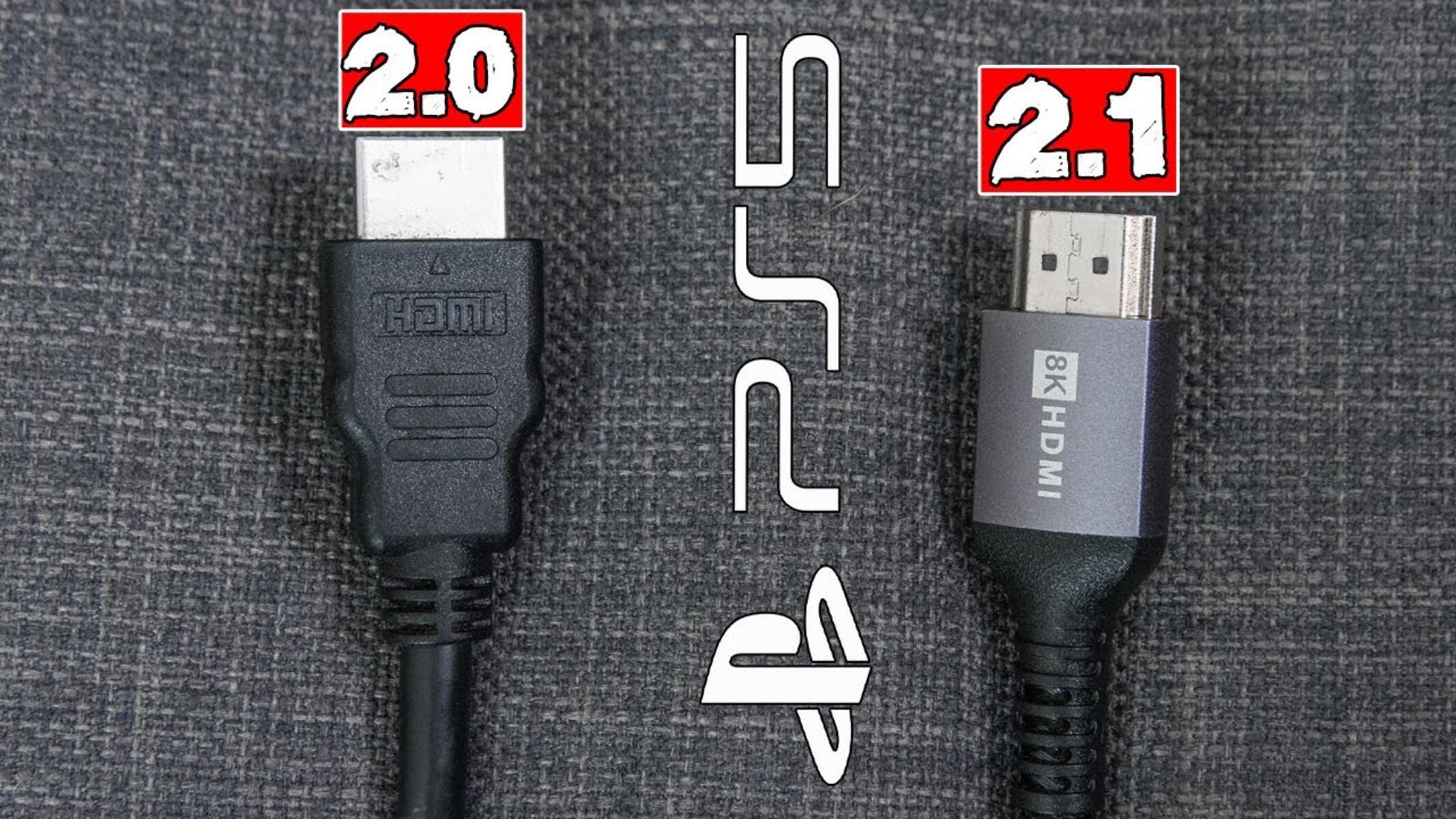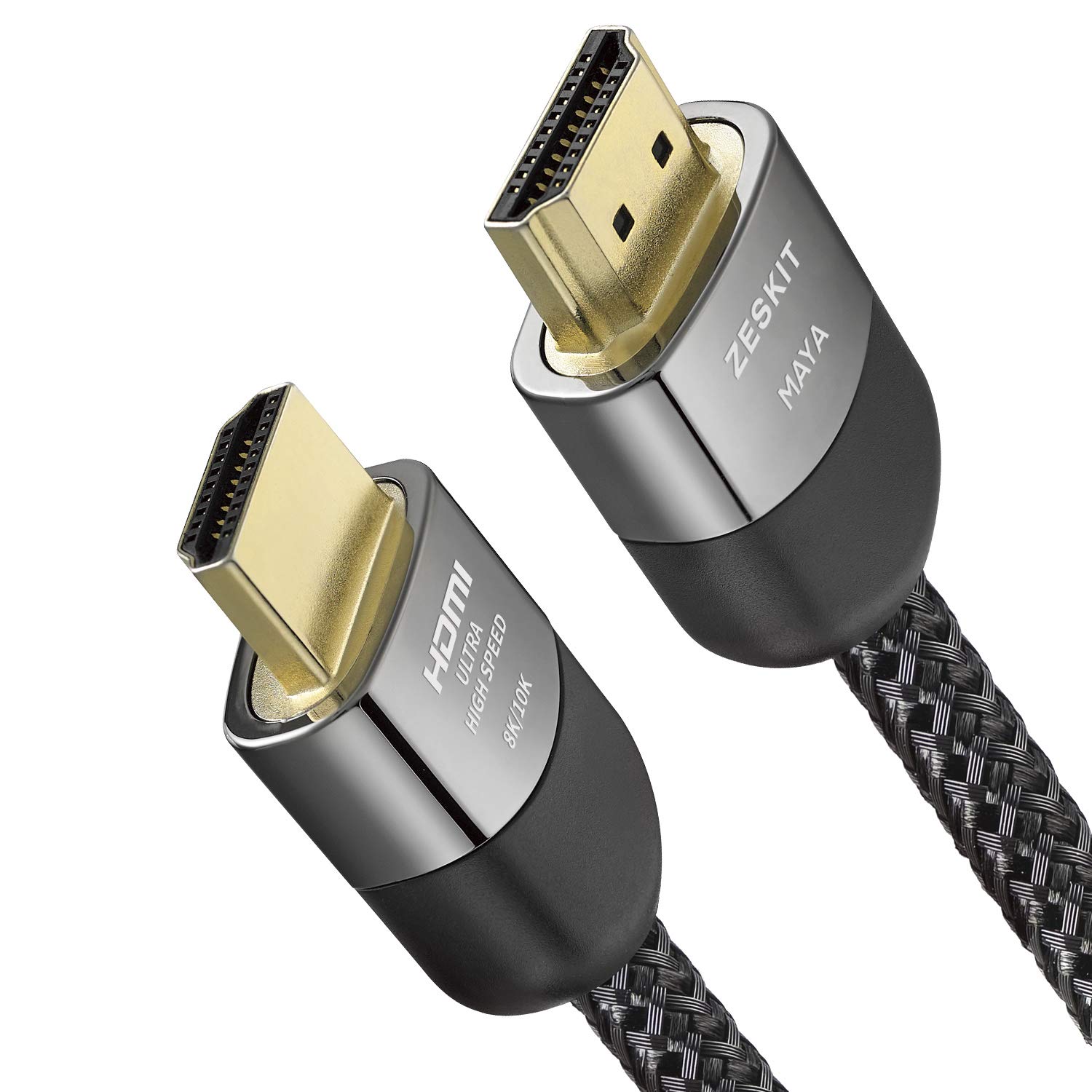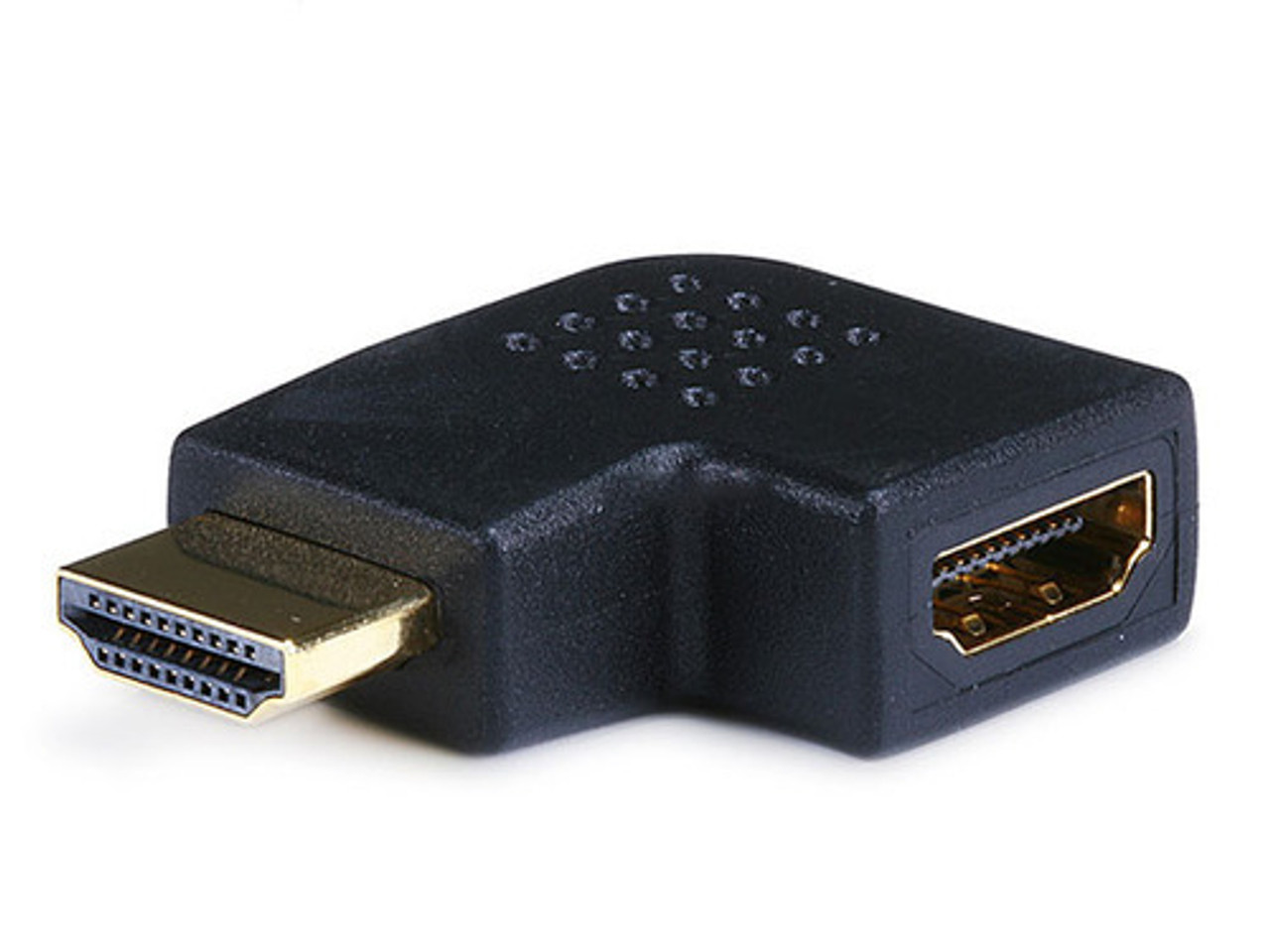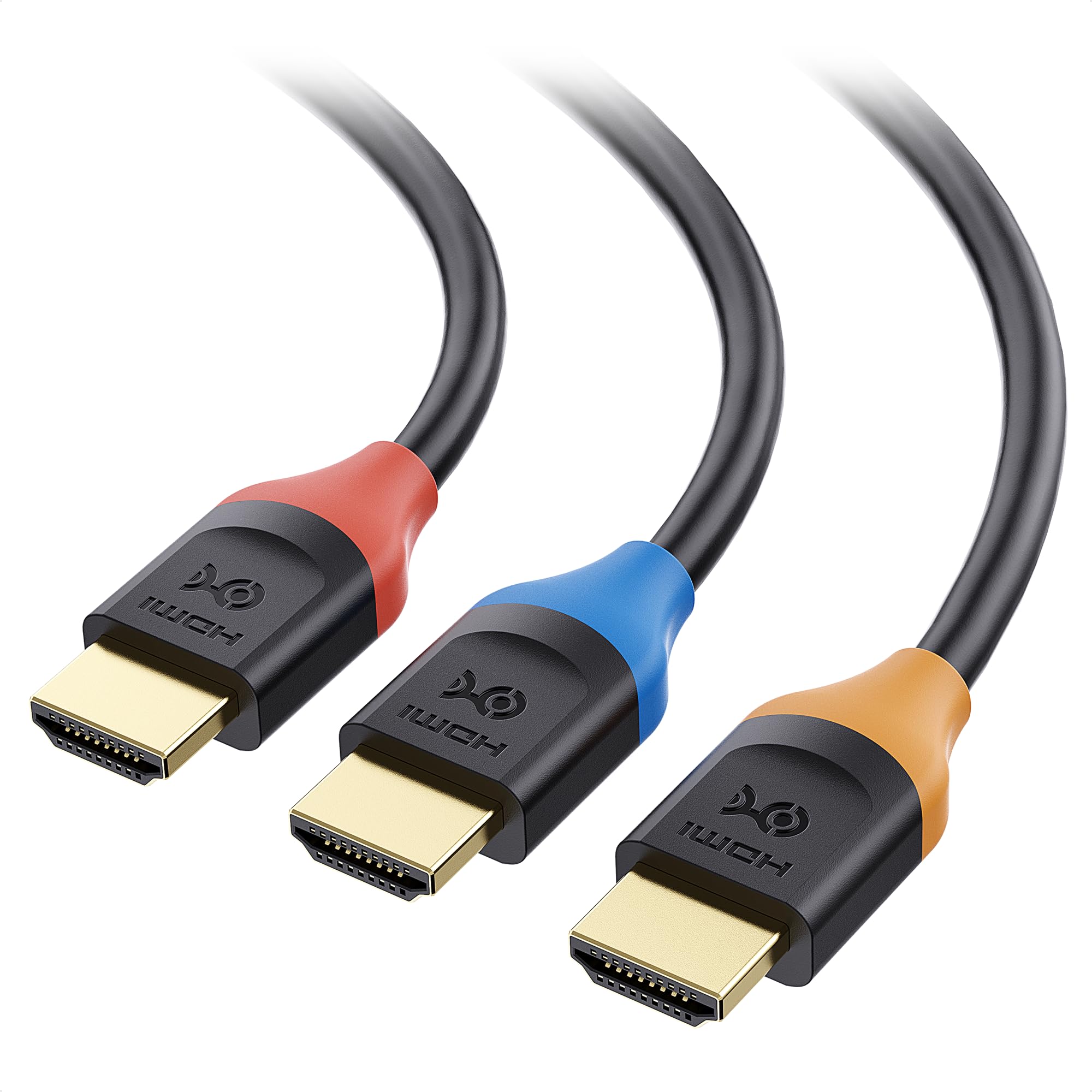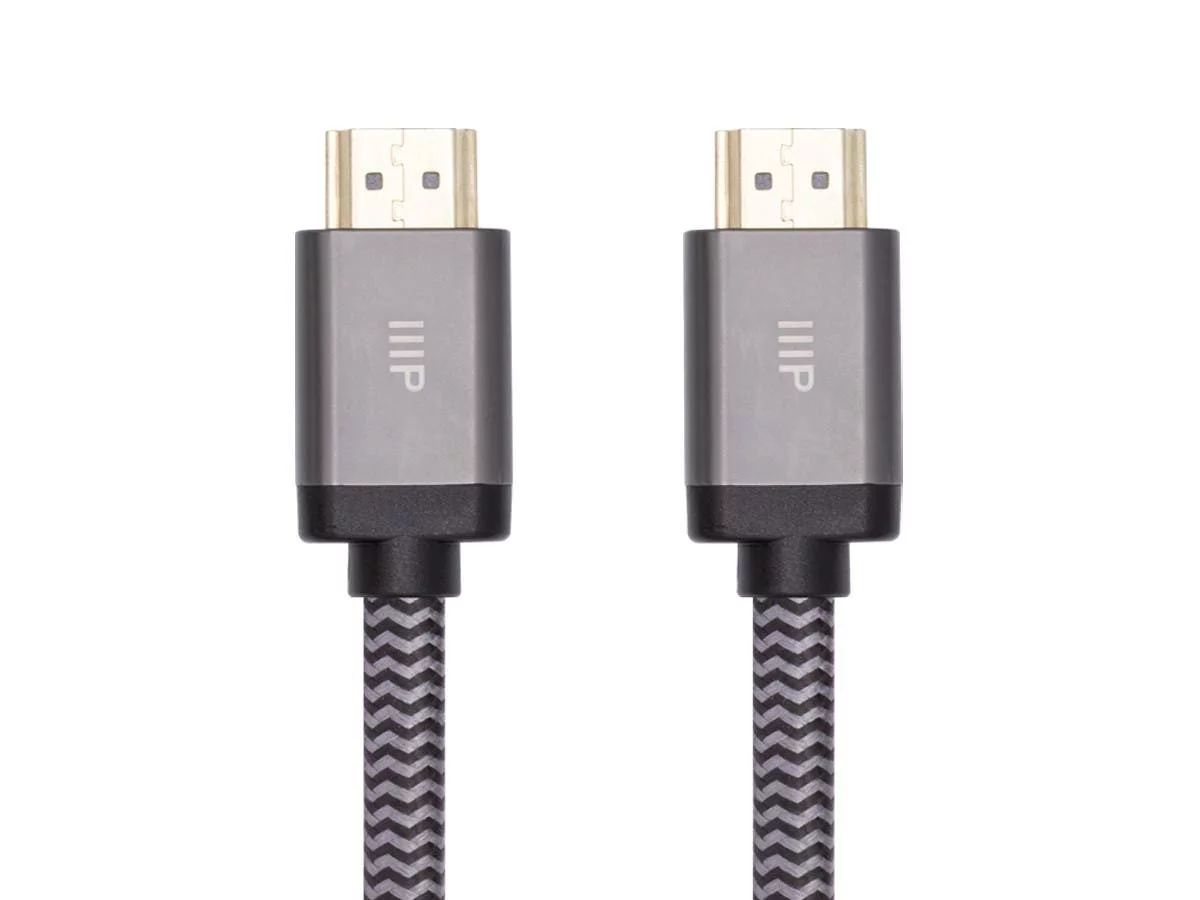What is HDMI 2.1?
HDMI, or High-Definition Multimedia Interface, is a digital interface that connects audio and video devices such as TVs, monitors, and gaming consoles. HDMI has undergone several iterations over the years, with each version bringing improved features and capabilities. HDMI 2.1 is the latest version of this standard, offering significant advancements over its predecessors.
HDMI 2.1 introduces several new features that enhance the audio and video experience. It supports higher resolutions and refresh rates, making it capable of transmitting content in 4K, 8K, and even up to 10K resolutions. This means that HDMI 2.1 can deliver incredibly sharp and detailed images, allowing viewers to fully immerse themselves in their favorite movies, shows, or games.
Furthermore, HDMI 2.1 supports higher frame rates, up to 120 frames per second (fps), resulting in smoother and more realistic motion. This is particularly important for gaming, as higher frame rates provide a more fluid and responsive gameplay experience.
Another key feature of HDMI 2.1 is variable refresh rate (VRR) support, which reduces screen tearing and improves overall visual quality. With VRR, the display’s refresh rate can be synchronized with the graphics processor’s output, resulting in smoother and tear-free visuals, especially during fast-paced gaming scenarios.
In addition to better video capabilities, HDMI 2.1 also brings improvements to audio transmission. It supports enhanced audio formats such as Dolby Atmos, providing a more immersive and three-dimensional sound experience. This is especially beneficial for home theater setups, where viewers can enjoy a cinema-like audio experience from the comfort of their own living rooms.
HDMI 2.1 cables are backward compatible, meaning they can be used with devices that support previous HDMI versions. However, to fully take advantage of the enhanced features of HDMI 2.1, it is important to ensure that both the source device (e.g., gaming console, Blu-ray player) and the display device (e.g., TV, monitor) support HDMI 2.1 as well.
In the next sections, we will explore how to determine if an HDMI cable is version 2.1, as well as the key factors to consider when purchasing one.
The importance of HDMI 2.1 cables
HDMI 2.1 cables play a crucial role in ensuring a seamless and high-quality audio and video experience. While many may believe that any HDMI cable will suffice, using an HDMI 2.1 cable can make a significant difference, especially when it comes to newer devices and higher resolutions.
One of the key reasons why HDMI 2.1 cables are important is their ability to support higher resolutions and refresh rates. With the rise of 4K, 8K, and even 10K content, older HDMI cables may not be able to handle the bandwidth required for these resolutions. This could result in blurry images, artifacts, or even no signal at all. HDMI 2.1 cables, on the other hand, provide the necessary bandwidth to transmit these higher resolution signals without compromising image quality.
Moreover, HDMI 2.1 cables support higher frame rates, up to 120 frames per second. This is particularly important for gamers, as higher frame rates offer a smoother and more responsive gaming experience. With an HDMI 2.1 cable, gamers can take full advantage of their high-refresh-rate gaming monitors and consoles, ensuring they stay competitive and enjoy a visually stunning gaming experience.
Another aspect where HDMI 2.1 cables excel is their support for variable refresh rate (VRR). This feature is especially beneficial when connected to devices that support VRR, such as gaming consoles and displays with FreeSync or G-Sync technology. With VRR, the refresh rate of the display is synchronized with the output of the graphics card, resulting in a smoother and tear-free picture, eliminating annoying screen tearing artifacts that can detract from the visual experience.
Furthermore, HDMI 2.1 cables also bring improvements in audio transmission. They support enhanced audio formats, such as Dolby Atmos, which provide a more immersive and realistic sound experience. With HDMI 2.1 cables, viewers can enjoy rich and dynamic audio, making movies, TV shows, and games more engaging and captivating.
It is important to note that while HDMI 2.1 cables offer these advanced features, they are backward compatible with older devices that support previous HDMI versions. This means that even if you have older devices, opting for an HDMI 2.1 cable future-proofs your setup, ensuring compatibility with newer devices down the line.
In the following sections, we will discuss how to identify HDMI 2.1 cables and the factors to consider when purchasing one to make the most out of your audio and video experience.
Physical differences between HDMI 2.1 and previous versions
While HDMI 2.1 may look similar to its predecessors at first glance, there are some physical differences that set it apart. These differences reflect the improved capabilities and increased bandwidth of HDMI 2.1, allowing it to support higher resolutions, refresh rates, and advanced features.
One noticeable physical difference is the connector itself. HDMI 2.1 cables use the same familiar HDMI Type A connector as previous versions, which is the standard rectangular connector used in most home theater devices. This means that HDMI 2.1 cables are compatible with existing HDMI ports on TVs, monitors, and other devices.
However, the key differentiation lies in the internals of the cable. HDMI 2.1 cables are designed with higher-quality conductors and improved shielding to handle the increased bandwidth required for higher resolutions and refresh rates. This results in a more reliable and stable signal transmission, reducing the chances of signal loss or degradation.
Another physical difference is the increased pin count. HDMI 2.1 cables have 48 pins, whereas previous versions have 19 pins. The additional pins in HDMI 2.1 allow for the transmission of the higher bandwidth required for 4K, 8K, and future resolutions. These extra pins ensure that the cable can handle the increased data transfer without any loss in signal quality.
In addition to the increased pin count, HDMI 2.1 cables also support eARC (enhanced Audio Return Channel). This feature allows for the transmission of higher-quality audio formats, such as Dolby Atmos, from the TV back to the audio system, through the same HDMI cable. This eliminates the need for a separate audio cable, simplifying the setup and improving overall audio quality.
Furthermore, HDMI 2.1 cables have improved support for high dynamic range (HDR) content. HDR enhances the contrast and color range of videos, delivering more vibrant and lifelike images. HDMI 2.1 cables can transmit HDR signals more effectively, ensuring that your HDR-compatible devices can fully optimize and display the enhanced picture quality.
It is important to note that despite these physical differences, HDMI 2.1 cables are backward compatible with older HDMI versions. They can be used with devices that support earlier versions, although the advanced features of HDMI 2.1 will only be utilized if both the source and display devices are HDMI 2.1 compatible.
In the next section, we will explore how to check if a cable is HDMI 2.1 and the markings to look for, ensuring you have the right cable for your audio and video needs.
Checking the product description and packaging
When purchasing an HDMI cable, one of the first places to look for information about its version is the product description provided by the manufacturer. The product description should clearly state the HDMI version supported by the cable, including whether it is HDMI 2.1.
Take the time to thoroughly read through the product description, paying attention to any specific features or capabilities mentioned. Look for keywords like “HDMI 2.1,” “4K,” “8K,” “10K,” “120Hz,” “VRR,” or “eARC.” These terms indicate that the cable is compatible with HDMI 2.1 and can handle the advanced audio and video features it offers.
Additionally, carefully examine the packaging of the HDMI cable. Manufacturers often prominently display the HDMI version on the packaging to make it easy for consumers to identify the supported specifications. Look for labels or badges indicating HDMI 2.1 compatibility. These labels may include the HDMI logo along with the version number.
Keep in mind that relying solely on packaging may not always be accurate, especially if the packaging is generic or if the cable is sold without packaging. Therefore, it’s advisable to cross-reference the information provided on the packaging with the product description or consult other reliable sources to ensure the cable’s compatibility.
In cases where the product description or packaging does not explicitly mention the HDMI version, it is advisable to contact the manufacturer or retailer for clarification. They can provide accurate information regarding the cable’s version and help you make an informed decision.
When checking the product description and packaging, remember to look for additional information about the cable’s length, build quality, and other specifications that may be important to your specific needs. These details can help you determine if the HDMI cable meets your requirements beyond just its version compatibility.
In the following sections, we will discuss additional factors to consider when identifying HDMI 2.1 cables and ensuring you select the right cable for your audio and video setup.
Look for the bandwidth rating
One of the key factors to consider when identifying HDMI 2.1 cables is the bandwidth rating. Bandwidth refers to the amount of data that can be transmitted over the cable per second. Higher bandwidth is essential for supporting higher resolutions, refresh rates, and advanced features.
When searching for an HDMI 2.1 cable, look for the specified bandwidth rating in the product description or on the packaging. HDMI 2.1 cables have significantly higher bandwidth compared to previous versions. They are designed to handle 48 Gbps (Gigabits per second) of data transfer, enabling support for 4K, 8K, and future higher resolutions without compromising image quality.
It’s important to note that not all HDMI cables are created equal when it comes to bandwidth. Lower bandwidth cables, such as those with ratings of 10.2 Gbps or 18 Gbps, may not be able to handle the data requirements of HDMI 2.1 content. Using a cable with insufficient bandwidth can result in limited resolution, reduced refresh rates, or even no signal at all.
When purchasing an HDMI cable, ensure that the bandwidth specification meets or exceeds the requirements of HDMI 2.1. Look for clear indications of 48 Gbps or mention of compatibility with 4K, 8K, and higher resolutions. Be cautious of purchasing cables that do not clearly state their bandwidth rating, as they may not be suitable for HDMI 2.1 content.
It’s worth mentioning that while some manufacturers may use alternative terms to describe the bandwidth rating, such as “Ultra High Speed” or “High Bit Rate 3,” the key is to ensure that the cable can handle the data transfer required for HDMI 2.1 content. Always double-check the stated bandwidth rating and research any alternative terms used to verify compatibility.
In addition to the bandwidth rating, consider the length of the cable. Longer cables may experience signal degradation, especially when transmitting higher resolutions and refresh rates. It is generally recommended to use shorter cables, around 6 to 10 feet, for optimal performance. If you require a longer cable, ensure it has proper shielding and build quality to minimize any potential signal loss.
In the next sections, we will explore further methods to identify HDMI 2.1 cables and the importance of certification logos in ensuring their compatibility.
Check for certification logos
When determining if an HDMI cable is version 2.1, another important aspect to consider is the presence of certification logos. These logos indicate that the cable has been tested and meets the standards set by the HDMI Licensing Administrator, Inc.
The most recognizable certification logo for HDMI cables is the “HDMI Premium Certified Cable” logo. This logo indicates that the cable has undergone rigorous testing to ensure its compatibility with HDMI 2.1 and its ability to handle the increased bandwidth and advanced features.
When looking for certification logos, check the product description or the cable itself for the HDMI Premium Certified Cable logo. This logo guarantees that the cable meets the requirements for HDMI 2.1 and will provide a reliable audio and video transmission.
In addition to the HDMI Premium Certified Cable logo, some cables may also display other certification logos related to specific features. For example, if the cable supports eARC (enhanced Audio Return Channel), it may have the “eARC” logo. Similarly, if it supports other advanced features like VRR (variable refresh rate), it may have the respective logo indicating this support.
It’s important to note that not all HDMI cables may carry certification logos. However, the presence of these logos can provide an extra level of assurance regarding the cable’s compatibility and performance. It’s recommended to prioritize cables with certification logos, especially when investing in equipment that requires the advanced features of HDMI 2.1.
While certification logos can be a helpful indicator, it’s essential to be aware that some reputable cables without logos may still meet the required specifications of HDMI 2.1. In such cases, it’s advisable to research the manufacturer and read customer reviews to ensure the cable’s reliability and performance.
In the upcoming sections, we will discuss further methods to identify HDMI 2.1 cables, such as testing them with 4K or 8K content, consulting with experts, and reading customer reviews.
Consider the length of the cable
When selecting an HDMI 2.1 cable, it’s important to consider the length that best suits your needs. The length of the cable can have an impact on the quality of the audio and video transmission, especially when dealing with higher resolutions and refresh rates.
In general, it’s recommended to use shorter HDMI cables for optimal performance. Shorter cables, typically around 6 to 10 feet, have less signal loss compared to longer cables. This is because longer cables may experience higher attenuation, resulting in a weaker signal and potential degradation of the audio and video quality.
If you require a longer cable, it’s important to choose one that is specifically designed for longer distances. Longer cables should have proper shielding and thicker conductors to minimize signal loss and maintain the integrity of the transmitted data. Look for cables that explicitly state their suitability for longer distances or have been tested for longer runs.
Keep in mind that the specific length requirements may vary depending on the specific setup and the devices involved. For instance, if you have a home theater system where the sources are located far away from the display, you may need longer cables to span the distance. In such cases, ensure that the cable’s length is sufficient for your specific installation.
It’s also worth noting that the length of the HDMI cable can impact the flexibility and ease of cable management. If you have limited space behind your devices or need to route the cable through tight spaces, consider a shorter cable that allows for easier installation and flexibility in positioning your equipment.
Remember to measure the distance between your source device (such as a gaming console or Blu-ray player) and the display device (TV or monitor) to determine the appropriate length. It’s better to choose a slightly longer cable than needed, as having extra length can provide flexibility in case of any future changes or rearrangements in your setup.
By considering the length of the cable and selecting the appropriate length for your specific needs, you can ensure optimal signal quality and a reliable audio and video transmission, enhancing your overall viewing experience.
In the next sections, we will explore additional methods to identify HDMI 2.1 cables, such as testing them with 4K or 8K content, as well as consulting with experts or reading customer reviews.
Testing the cable with 4K or 8K content
One effective way to determine if an HDMI cable is capable of supporting HDMI 2.1 is by testing it with 4K or 8K content. Since HDMI 2.1 cables are designed to handle the higher resolutions and refresh rates associated with these formats, testing the cable with such content can reveal its compatibility.
To perform the test, connect the HDMI cable between the source device (e.g., a 4K Blu-ray player or an 8K gaming console) and the display device (e.g., a 4K or 8K TV). Make sure both devices support the respective resolution and HDMI 2.1. Then, play a 4K or 8K video or game that displays content at the chosen resolution. Ideally, select content that contains visually demanding sequences or fast-motion scenes to assess the cable’s performance under different scenarios.
While playing the content, observe the display for any issues such as flickering, artifacts, color distortion, or signal dropouts. These issues could indicate that the cable is not capable of transmitting the high bandwidth required for 4K or 8K content. If the content plays smoothly without any visible issues, it suggests that the cable is likely HDMI 2.1 compatible.
It is important to note that the test should be conducted under optimal conditions, including a properly functioning source and display device, as well as high-quality content. Poorly encoded or low-quality content may not accurately reflect the cable’s performance. Additionally, factors such as the hardware capabilities of the connected devices and the settings on the devices themselves can also influence the test results.
If possible, perform the test with multiple HDMI cables, ideally including ones explicitly labeled as HDMI 2.1, to compare the performance. This can help verify if a cable labeled as HDMI 2.1 delivers the expected results and if other cables exhibit issues with the tested content. Taking these comparisons into account can provide valuable insights into the cable’s compatibility.
While testing with 4K or 8K content is a practical way to assess the cable’s capabilities, it is important to remember that it is not a foolproof method. Manufacturer specifications and certification information should still be considered to ensure HDMI 2.1 compatibility.
In the following sections, we will discuss additional methods to identify HDMI 2.1 cables, such as consulting with experts and reading customer reviews, to help you make an informed decision when purchasing your HDMI cable.
Consult with an expert or read customer reviews
When in doubt about the compatibility of an HDMI cable with HDMI 2.1, seeking advice from experts or reading customer reviews can provide valuable insights. Experts in the field of audio and video technology, such as technicians or sales representatives at electronic stores, can offer informed advice and recommendations based on their knowledge and experience.
Consulting with an expert allows you to ask specific questions and clarify any doubts you may have. They can guide you towards the most suitable HDMI 2.1 cables for your particular setup, taking into account factors such as the devices you are connecting, the cable length requirements, and the desired features or specifications.
If an expert is not readily available, another valuable resource is customer reviews. Reading reviews written by people who have already purchased and used HDMI 2.1 cables can help you gain insights into their experiences. Customer reviews often highlight the strengths and shortcomings of a product, providing you with a more comprehensive picture of its performance and compatibility.
In customer reviews, pay attention to comments specifically related to HDMI 2.1 compatibility, performance with high-resolution content, and observations about the cable’s build quality and durability. Look for reviews from individuals who have used the cable with devices similar to yours, as their experiences will be more relevant to your specific situation.
It’s important to consider a diverse range of opinions and feedback when reading customer reviews. Look for patterns in the comments to identify common issues or positive aspects. However, be critical and discerning as not all reviews may be accurate or align with your specific needs.
Keep in mind that individual experiences can vary, and a negative review may not necessarily indicate a widespread issue with the cable. Likewise, a positive review should be evaluated in the context of other reviews and supporting evidence.
Remember that while consulting with an expert or reading customer reviews can provide valuable guidance, it is still essential to rely on official specifications and certifications to verify HDMI 2.1 compatibility. Combining expert advice and customer feedback with detailed research on the cable’s capabilities will help you make a well-informed decision.
In the next section, we will summarize the key points discussed and provide further insights on identifying HDMI 2.1 cables to enhance your audio and video experience.
Conclusion
Identifying HDMI 2.1 cables is important to ensure optimal audio and video performance, especially with the increasing popularity of 4K and 8K content. By considering multiple factors, you can confidently select the right HDMI 2.1 cable for your setup and enhance your overall viewing experience.
Understanding the physical differences between HDMI 2.1 and previous versions, such as the increased pin count and improved shielding, assists in identifying compatible cables. Checking product descriptions and packaging for clear indications of HDMI 2.1 support, bandwidth ratings of 48 Gbps, and certification logos like the HDMI Premium Certified Cable logo help ensure the cable’s compatibility.
Additionally, testing the cable with 4K or 8K content can provide a practical assessment of its performance, although it should be done under optimal conditions. Consulting with experts or reading customer reviews can offer valuable insights and real-world experiences to further guide your decision-making process.
Remember to consider the length of the cable and select the appropriate length for your specific needs. Shorter cables generally provide better signal quality and easier cable management, but longer cables with proper shielding can be used for more extensive setups.
Ultimately, a combination of thorough research and careful consideration of various factors will help you choose the right HDMI 2.1 cable, ensuring seamless audio and video transmission and unlocking the full potential of your devices and content.









